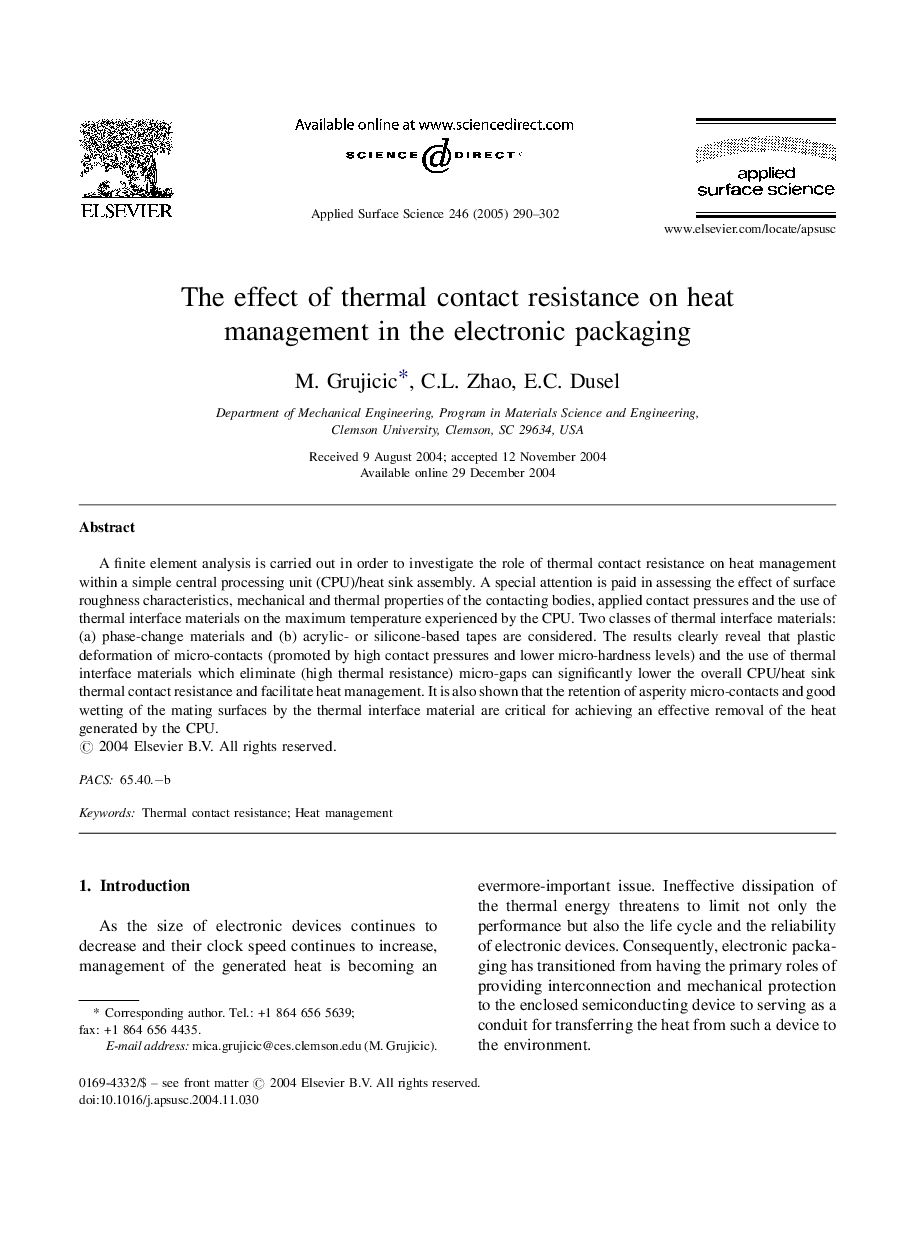| Article ID | Journal | Published Year | Pages | File Type |
|---|---|---|---|---|
| 9567269 | Applied Surface Science | 2005 | 13 Pages |
Abstract
A finite element analysis is carried out in order to investigate the role of thermal contact resistance on heat management within a simple central processing unit (CPU)/heat sink assembly. A special attention is paid in assessing the effect of surface roughness characteristics, mechanical and thermal properties of the contacting bodies, applied contact pressures and the use of thermal interface materials on the maximum temperature experienced by the CPU. Two classes of thermal interface materials: (a) phase-change materials and (b) acrylic- or silicone-based tapes are considered. The results clearly reveal that plastic deformation of micro-contacts (promoted by high contact pressures and lower micro-hardness levels) and the use of thermal interface materials which eliminate (high thermal resistance) micro-gaps can significantly lower the overall CPU/heat sink thermal contact resistance and facilitate heat management. It is also shown that the retention of asperity micro-contacts and good wetting of the mating surfaces by the thermal interface material are critical for achieving an effective removal of the heat generated by the CPU.
Related Topics
Physical Sciences and Engineering
Chemistry
Physical and Theoretical Chemistry
Authors
M. Grujicic, C.L. Zhao, E.C. Dusel,
